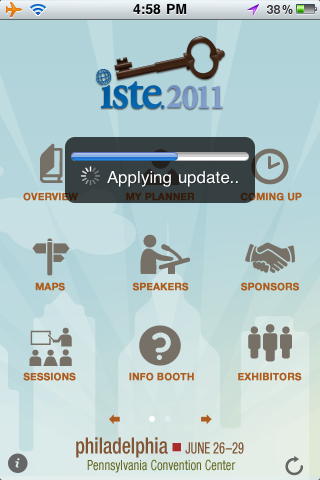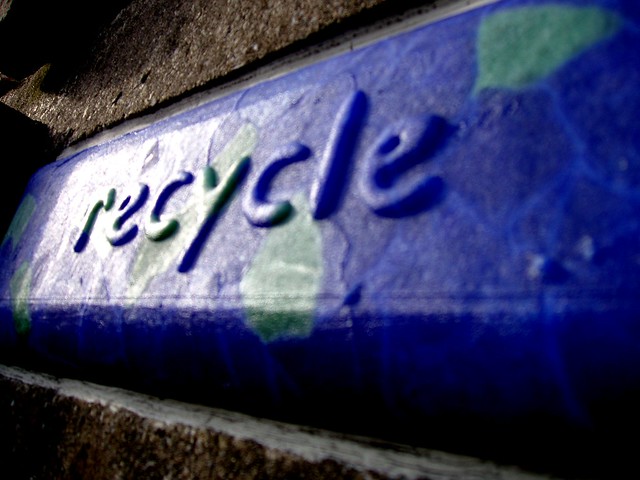I just thought I’d share some numbers around just the conference planner, which I’m picking on because it is easy to quantify, but believe me there are plenty of other examples of waste here at ISTE. The ISTE conference planner is about 110 pieces of paper. Each book is about 30 cm long by 20 cm wide. There are about 13,000 people at ISTE. Each of them received a planner.
If you lined up the pages from the conference planners end on end, they would be about 429km long, about the distance from Cleveland to Philadelphia.
If all of the conference planners were put on a scale, they would weigh just over 6 metric tonnes (6000kg).
15 adult trees were chopped down to make all of the conference planners for this conference.
 Now let’s compare these numbers to the fairly good conference planner App that ISTE released.
Now let’s compare these numbers to the fairly good conference planner App that ISTE released.
0 trees cut down.
The weight of the apps themselves is 0.
You can’t line up apps.
You do need everyone to have a mobile electronic device of some sort, which raises other environmental questions, but at least those devices have multiple uses, and can replace many, many other paper resources.
The conference planner app includes my own personal schedule, it is searchable, it automatically updates itself every time I open it up. I don’t have to go through the conference planner app page by page to find information. It tells me what sessions are coming up. None of these functions is possible with the paper version of the conference planner.
Let’s try a different system for next year. Why don’t we use an opt-in system for the conference planners?
How many people would have turned down the conference planner if they had the choice?
